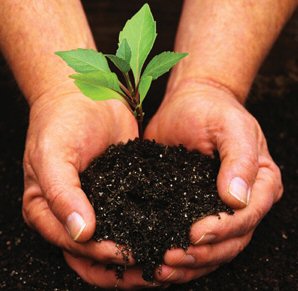The Importance of Choosing the Right Tree
The decision on exactly what sort of tree to plant is a very important one. Think very carefully, do some research, consult your local nursery, find out about the root system and how tall and how wide the tree or shrub grows. When you have decided on which kind of tree you would like, and where you would like to put it, you can finally begin the planting process. If you buy your tree from a nursery, be especially careful when you are taking it from the nursery to your house. Take care not to damage roots and branches.
When you have gotten your tree safely back to your yard, look at the bottom of it and see how big the clump of roots or the size of the pot. It may seem like a lot of work now, but you want to dig a hole that is twice as wide as the clump or pot, and just a little less deep. Making the hole slightly bigger than the clump of roots allows there to be room for the soil that you dug out to be put back in. Otherwise you would be stuck with a giant heap of unwanted dirt, and nowhere to put it. After you have dug the hole, line the hole with some compost or fertiliser so that the tree will have lots of organic material to enhance growth. After you have done this you should set your tree into the hole, and spread the roots out evenly so that the tree will be strong and stable. Then take the soil that you have dug up and fill in the hole completely. Unless you want big piles of dirt everywhere, you should be sure you use all of the dirt even is it is a couple inches higher than the rest of your yard. This is because it will compress when watered. Before you firm up the soil, make sure that the tree is completely vertical and will not fall over. After you have checked that the tree is perfectly vertical you can gently firm up the soil. If the tree’s trunk is not yet completely sturdy and can be bent, you need to tie the tree to a stake with a bit of rope. Never tie the rope tightly to the tree, as you need to allow room for the trunk to expand. Once the tree is sturdy enough to withstand all types of weather, you can take the stakes off of it. When all of this is done you should mulch around the base of the tree. Mulching is important as it assists in adding organic material to the soil, worms love it and mulch helps to contain moisture.
If you live in an area where wildlife can access your yard, then you should put a fence around your tree, because some animals will eat the bark off of young trees. If you have planted a fruit tree it will start to bear fruit after it is three to five years old. Once your tree starts to carry a lot of fruit you should periodically pick some of the fruit so that the branches aren’t weighed down too much. If the fruit gets too thick, the branches can break off. On some years your tree might not bear as much fruit as others, but this should not worry you. Healthy trees often take years on “vacation” where they produce little or no fruit. After you’ve planted your tree you might start to have some problems with pests. To help keep these pests away, always rake away old leaves, brush, or any other decaying matter that could be holding bugs that could be harmful to your tree. To make sure that your tree always stays healthy in the long run, you should prune it during winter or spring. Water your tree every two weeks during dry times, and be sure not to hit your tree with a lawn mower or a weed trimmer because it could severely damage the growth process. Make sure that your tree gets plenty of water and plenty of sun, and your new tree will reward you with years of satisfaction.

